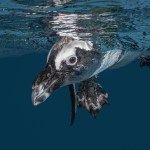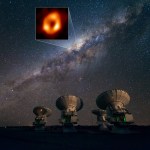Newsdeck
Spacecraft unveiled for Europe’s first mission to Mercury
European and Japanese scientists Thursday proudly unveiled the BepiColombo spacecraft ahead of its seven-year journey to Mercury, one of the Solar System's most enigmatic planets.
Due to be launched in 2018, BepiColombo will be the European Space Agency’s first mission to the closest rock to the Sun.
The mission has an unusual design, comprising a “stacked aircraft” carrying two orbiters — one European, the other Japanese — which will separate on arrival to go into different orbits around Mercury.
BepiColombo aims to “follow up on many of the intriguing results of NASA’s Messenger mission, probing deeper into Mercury’s mysteries than ever before,” ESA said.
The joint project involves more than 33 companies from 12 EU nations, as well as firms from the US and Japan.
It has been delayed several times, but missions chiefs are now confident that it is on track to launch in October next year.
Mercury is the “most peculiar of all rocky planets,” Alvaro Gimenez, ESA’s director of Science told reporters at the agency’s centre in the Dutch coastal town of Noordwijk.
Its surface is wracked by extreme temperatures, ranging from +450 to -180 degrees Celsius (+842 to -292 degrees Fahrenheit).
It also has a magnetic field, the only rocky planet besides Earth to have one.
But Mercury’s so weak that the field does not provide a shield against solar radiation.
It orbits just 58 million kilometres (36 million miles) from the Sun, and its surface is blasted by radiation levels that would destroy earthly lifeforms.
So far only two NASA missions have visited Mercury — Mariner 10 in the 1970s and Messenger, which orbited the planet from 2011 until it ran out of fuel in April 2015.
BepiColombo will study the peculiarities of Mercury’s internal structure and magnetic field generation, and how it interacts with the Sun and solar wind.
The Mercury mission is Europe’s “most complicated ever,” said Gimenez.
“It’s difficult to get there, it’s difficult to work there.”
The orbiters will seek to get as close as possible to the planet’s surface, which is blasted by radiation levels 10 times higher than on the Sun and by temperatures hot enough to melt metal.
The European orbiter is carrying 11 instruments and the Japanese counterpart has five, designed to explore Mercury’s crater-pocked surface, enigmatic magnetism and tenuous, vestigial atmosphere.
Scientists will first seek to launch what they termed “a technological masterpiece” on October 5,
“Arrival at Mercury is first foreseen … on December 5, 2025,” said Ulrich Reininghaus, the ESA BepiColombo project manager. DM


















 Become an Insider
Become an Insider